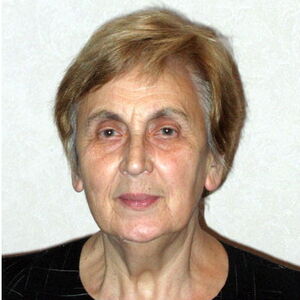CCNA 1. Networking Basics v3.1.1 Student Lab Manual (796248), страница 26
Текст из файла (страница 26)
Which octet(s) represent the network portion of a Class C IP address? _________________2. Which octet(s) represent the host portion of a Class C IP address? ____________________3. What is the binary equivalent of the Class C network address in the scenario? 197.15.22.0Decimal network address:___________ ___________ ___________ ___________Binary network address:___________ ___________ ___________ ___________4. How many high-order bits were borrowed from the host bits in the fourth octet? ___________5. What subnet mask must be used? Show the subnet mask in decimal and binary.Decimal subnet mask:___________ ___________ ___________ ___________Binary subnet mask:___________ ___________ ___________ ___________6.
What is the maximum number of subnets that can be created with this subnet mask? ________7. What is the maximum number of useable subnets that can be created with this mask? _______8. How many bits were left in the fourth octet for host IDs? _____________________________6-7CCNA 1: Networking Basics v 3.1 – Lab10.3.5aCopyright 2003, Cisco Systems, Inc.9. How many hosts per subnet can be defined with this subnet mask? _____________________10. What is the maximum number of hosts that can be defined for all subnets with this scenario?Assume the lowest and highest subnet numbers and the lowest and highest host ID on eachsubnet cannot be used.
_____________________________________________________11. Is 197.15.22.63 a valid host IP address with this scenario? ___________________________12. Why or why not? __________________________________________________________13. Is 197.15.22.160 a valid host IP address with this scenario? ___________________________14. Why or why not? __________________________________________________________15. Host A has an IP address of 197.15.22.126.
Host B has an IP address of 197.15.22.129. Arethese hosts on the same subnet? _______ Why?__________________________________________________________________________________________________________________________________________________________________________________________________________________________________________________________________________________________________________________________________________________________________________________7-7CCNA 1: Networking Basics v 3.1 – Lab10.3.5aCopyright 2003, Cisco Systems, Inc.Lab 10.3.5b Subnetting a Class A NetworkObjectiveAnalyze a Class A network address with the number of network bits specified in order to determinethe following:•Subnet mask•Number of subnets•Hosts per subnet•Information about specific subnetsBackground / PreparationThis is a written exercise and is to be performed without the aid of an electronic calculator.Step 1 Given a Class A network address of 10.0.0.0 / 24 answer the following questionsHow many bits were borrowed from the host portion of this address? ___________What is the subnet mask for this network?1.
Dotted decimal ___________________________________________________________2. Binary _______________ _______________ _______________ _______________How many usable subnetworks are there? _________________________________________How many usable hosts are there per subnet?______________________________________What is the host range for usable subnet sixteen? ____________________________________What is the network address for usable subnet sixteen? ________________________________What is the broadcast address for usable subnet sixteen? _______________________________What is the broadcast address for the last usable subnet? _______________________________What is the broadcast address for the major network? _________________________________1-1CCNA 1: Networking Basics v 3.1 – Lab10.3.5bCopyright 2003, Cisco Systems, Inc.Lab 10.3.5c Subnetting a Class B NetworkObjectiveThe objective of this lab is to provide a subnetting scheme using a Class B networkBackground / PreparationThis is a written lab and is to be performed without the aid of an electronic calculator.ABC Manufacturing has acquired a Class B address, 172.16.0.0.
The company needs to create asubnetting scheme to provide the following:•36 subnets with at least 100 hosts•24 subnets with at least 255 hosts•10 subnets with at least 50 hostsIt is not necessary to supply an address for the WAN connection since it is supplied by the Internetservice provider.Step 1 Given this Class B network address and these requirements answer the followingquestionsHow many subnets are needed for this network? ______________________________________What is the minimum number of bits that can be borrowed? ______________________________What is the subnet mask for this network? __________________________________________1. Dotted decimal ___________________________________________________________2.
Binary ________________ ________________ ________________ ________________3. Slash format _____________________________________________________________How many usable subnetworks are there? __________________________________________How many usable hosts are there per subnet? _______________________________________Step 2 Complete the following chart listing the first three subnets and the last 4 subnetsSubnetwork #1-2Subnetwork IDCCNA 1: Networking Basics v 3.1 – Lab10.3.5cHost RangeBroadcast IDCopyright 2003, Cisco Systems, Inc.What is the host range for subnet two? ____________________________________________2-2What is the broadcast address for the 126th subnet?________________________________What is the broadcast address for the major network?________________________________CCNA 1: Networking Basics v 3.1 – Lab10.3.5cCopyright 2003, Cisco Systems, Inc.Lab 10.3.5d Subnetting a Class C NetworkObjectiveThe objective of this lab is to provide a subnetting scheme using a Class C network.Background / PreparationThis is a written exercise and is to be performed without the aid of an electronic calculator.The Classical Academy has acquired a Class C address, 192.168.1.0.
The academy needs to createsubnets to provide low level security and broadcast control on the LAN. It is not necessary to supplyan address for the WAN connection. It is supplied by the Internet service provider.The LAN consists of the following, each of which will require its own subnet:•Classroom #128 nodes•Classroom #222 nodes•Computer lab30 nodes•Instructors12 nodes•Administration8 nodesStep 1 Given this Class C network address and these requirements answer the followingquestionsHow many subnets are needed for this network?_____________________________________What is the subnet mask for this network?1. Dotted decimal2.
Binary________________________________________________________________________ ________________ ________________ _______________3. Slash format_____________________________________________________________How many usable hosts are there per subnet?______________________________________Step 2 Complete the following chartSubnetwork #1-2Subnetwork IPCCNA 1: Networking Basics v 3.1 – Lab10.3.5dHost RangeBroadcast IDCopyright 2003, Cisco Systems, Inc.What is the host range for subnet six?____________________________________________What is the broadcast address for the 3rd subnet?____________________________________What is the broadcast address for the major network?2-2CCNA 1: Networking Basics v 3.1 – Lab10.3.5d________________________________Copyright 2003, Cisco Systems, Inc.Lab 11.2.4 Protocol Inspector, TCP, and HTTPObjectiveThe objective of this lab is to use Protocol Inspector, or equivalent software, to view dynamicTransmission Control Protocol (TCP) operations.
The operation that will be specifically looked at isHTTP during web page access.Background / PreparationProtocol analysis software has a feature called capture. This feature allows all frames through aninterface to be captured for analysis. With this feature, it is possible to see how the TCP movessegments filled with user data across the network. TCP may seem to be a bit abstract, but theprotocol analyzer shows just how important TCP is to network processes such as e-mail and webbrowsing.At least one of the hosts must have the Protocol Inspector software installed.
If the lab is done inpairs, having the software installed on both machines means that each person can run the lab steps.However, each host may display slightly different results.Step 1 Start Protocol Inspector and your browserStep 2 Go to detail viewStep 3 Start a captureStep 4 Request a Web PageStep 5 Watch the monitor view while the web page is requested and deliveredStep 6 Stop the captureStep 7 Study the TCP frames, HTTP frames, and statistics using various views, especiallythe detail viewStep 8 Using the detail view, explain what evidence it provides about the following:1-2•TCP handshakes•TCP acknowledgments•TCP segmentation and segment size•TCP sequence numbers•TCP sliding windows•HTTP protocolCCNA 1: Networking Basics v 3.1 – Lab11.2.4Copyright 2003, Cisco Systems, Inc.ReflectionHow did this lab help to visualize the TCP protocol in action?__________________________________________________________________________________________________________________________________________________________________2-2CCNA 1: Networking Basics v 3.1 – Lab11.2.4Copyright 2003, Cisco Systems, Inc..
















